Tools and supplies needed:
- Protective eyewear or safety goggles
- Measuring tape
- Straightedge or Speed Square®
- Pencil
- Large tin snips
- Wood chisel & hammer (optional)
- File
- Latex or oil-based primer (if method 1 is used)
- Soft cloth
- Level (2′ to 4′)
- Caulk gun and adhesive (if using method 2)
If cutting tiles with a power saw:
- Table saw or chop saw (for straight cuts only)
- Protective eyewear or safety goggles
- Dust mask or respirator We recommend a dust mask or respirator be used when cutting the stone tiles with a power saw as stone dust could cause irritation if inhaled.
Before you begin
Installing Aspect peel & stick stone tiles is a simple, exciting project that adds instant style to your kitchen or bath. We have deliberately over-explained the tile installation. Have fun with this project. It’s going to be easy and look great!
Read this installation manual in its entirety before you start. If you have doubts about doing this installation, you should contact a qualified contractor, carpenter or professional installer. Visit www.aspectideas.com for FAQs, photos and additional information.
Due to the natural variance of real stone, we cannot guarantee an exact color or texture match from lot to lot. Prior to adhering Aspect tiles to your wall, please unpackage & lay out all purchased product to ensure color and texture consistency. If you encounter unreasonable variation, please give us a call at 1-800-434-3750 (7am-4:30pm CST, M-F) so that we may assist you with your project.
PROPER SURFACE PREPARATION IS ESSENTIAL FOR A SUCCESSFUL PROJECT
Failure to follow recommended surface preparation instructions may void the warranty. ACP, LLC is not responsible or liable for any labor costs or damaged product incurred as a result of improper installation. All product defects are covered under our 5-year limited warranty.
Installation Methods
Method 1:
The adhesive on the back side of the Aspect stone tiles is engineered to stick to flat, primed, smooth walls.
Allow the tiles and substrate to come to room temperature (65°F to 100°F) before installation.
If you are using installation Method 1, proper wall preparation is required. Aspect can be installed over most structurally sound substrates if they are clean, flat, smooth, dry, and free of dust, wax, soap scum and grease. Acceptable substrates are drywall, plaster or clean, smooth tile (glazed, porcelain type tile; not porous or textured). Any damaged, loose or uneven areas must be repaired, patched, leveled and primed.
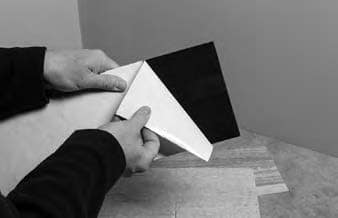
The adhesive on the back side of the Aspect tiles is engineered to be aggressive and pressure-sensitive
Method 2:
If you do not intend to prepare, sand and prime the surface, an additional adhesive should be used. We recommend a high-quality polyurethane construction adhesive be applied to the back of each tile in these cases.
Apply some pea-sized dots of adhesive to the back of a full tile (see right). Keep the adhesive a half-inch from the edges.
Firmly press the tiles into place. If adhesive squeezes out around the tiles, be sure to wipe it off before it dries.
Recommended Adhesives
| Brand | Type |
|---|---|
| Loctite® | PL Premium® |
| Loctite® | PL Premium Advanced® |
| LePage® | PL Premium® |
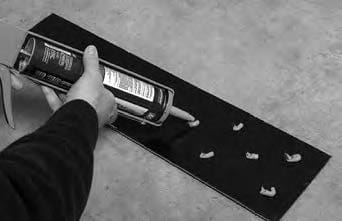
Using high-quality polyurethane construction adhesive
Layout
Measure the first area to be covered by Aspect material. We recommend you lay out the entire project on a flat surface, like the counter top, a table or the floor, before adhering to the substrate, to be sure you have enough tiles and your design and layout is correct. This will also give you good reference as to how the tiles will look on your wall.
As each project is different, be sure to plan for cutouts, corners or edge treatments before applying tiles. Tile edge seams will be less visible if they are not aligned. When starting a new row, we recommend either a random staggered pattern or a subway pattern. See illustrations below.


One popular layout method is to begin from the inside corner of your counter and work across left to right. This method allows you to use two points of reference, your vertical wall and horizontal counter top. Note – when using these two points of reference, be sure to check them for level on the horizontal plane and 90° on the vertical plane. This will prevent any problems as you build your backsplash.
Lay a 4-foot level on top of your counter top or backsplash return lip. If the counter top is level and straight, begin tile installation as described below. If your counter top is not level and straight, please see our FAQs on www.aspectideas.com to learn how to start the first row.
Installing your first tile
Here’s where the fun begins. Be sure the substrate is clean and dry.
As you begin to place the first tile, angle the top of the tile (or one side) away from the wall so the tile does not stick before you are ready. See images below. Do not apply pressure to the tile until you are sure of your placement. If alignment is true, apply pressure to the whole tile.
Do not bend tiles backward as it could permanently damage the tile.
The aggressive design of the adhesive does not allow for repositioning after the tile has been pressed in place. If the tile is affixed but not aligned properly, see the Removing Tiles section, below.




Cutting Tiles
If cutting tiles is necessary, use one of our recommended tools and methods listed above. A large tin snip is the recommended cutting tool. Alternative cutting methods include a table saw or chop saw for any necessary straight cuts. Use a fine-tooth blade for cutting. Use a combination of a snip and chisel for cutting notches out for various cutouts needed, such as an electrical outlet.
Leave on the adhesive liner for measuring, drawing lines and cutting tiles. Measure and layout on a tile where the cut must be made and cut the tile. Take the cut tile (adhesive liner still on tile) to the work space and place it in its intended location, ensuring it fits properly. Cut and install all remaining tiles using the same steps described above. When tiles are installed to your satisfaction, press each again firmly with your hand. This will ensure that the adhesive bonds to the substrate.

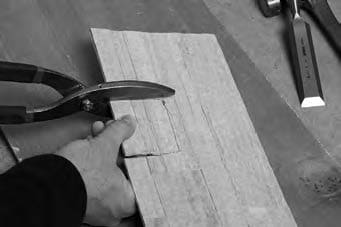
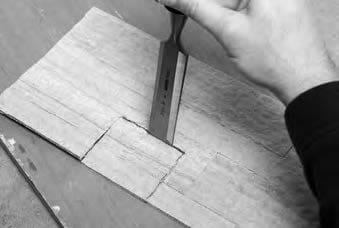

Cutting options

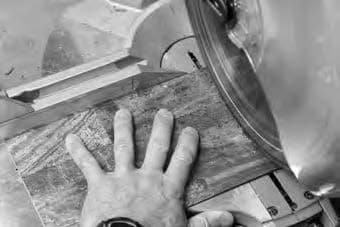
Deburring cut tiles
If desired, use a metal file to debur the cut edges.
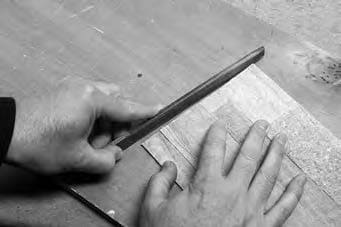
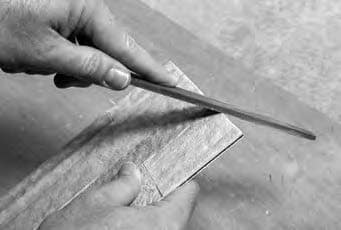
Adhering small pieces
Use tube adhesive for small cut pieces of Aspect stone that are less than 4 inches by 4 inches.
Removing tiles
If a tile needs to be removed, apply heat with a hair dryer to soften the adhesive. Use a putty knife on the back side and slowly apply outward pressure to release the tile from the wall. The adhesive is engineered to not be removed so caution should be taken to not damage the wall. Any removed tiles may be unusable. ACP is not responsible or liable if you damage your walls. If the adhesive is destroyed but the tile face is fine, you can try using PL Premium® adhesive to reapply the tile.
Care after Installation
As with all natural stone products, there is some inherent risk of staining. Stone sealers or impregnators can provide protection against stains. For additional information and options, please see below and see our detailed sealer/impregnator guide here.
Sealing Options
Using stone impregnators or sealers is not required. They will provide protection from staining, but can alter the appearance of our stone tiles. There are two main types of stone sealers: impregnators and sealers/enhancers.
lmpregnators penetrate the stone and protect from within by filling all pores and cavities with a protectant. lmpregnators retain the natural appearance of the stone as much as possible. lmpregnators, such as Miracle Sealants® 511 lmpregnator (or similar products; visit www.aspectideas.com/FAQ for brand suggestions), offer moderate stain protection. Follow manufacturer’s directions.
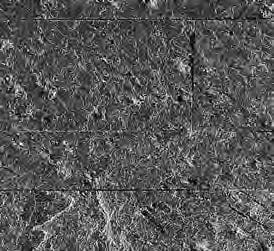
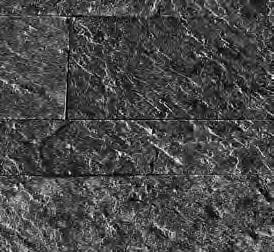
Stone sealers/enhancers are a durable coating that bonds to the surface of the stone. These products slightly darken the stone color, look wet and have a gloss finish. Sealers/Enhancers, such as Miracle Sealants® 1-Step Natural Stone Sealer and Color Enhancer (or similar products; visit www.aspectideas.com/FAQ for brand suggestions), provide a high level of stain protection. Follow manufacturer’s directions.

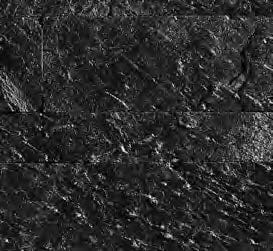
To see examples of impregnator and sealer on all stone options visit Aspectideas.com.
Cleaning
Wash the tiles as needed using a mild liquid dish detergent mixed with warm water. A soft brush may help remove debris. Rinse the stone tiles with clean water, and dry with a soft cloth to prevent water spots. If you need a more aggressive cleaner, use a stone cleaner available at any home center. Do not use cleaners that contain lemon or vinegar, as these ingredients can cause etching.
Spalling
Aspect stone tiles will naturally flake. For 2-3 months after installation, small pieces may flake off the tiles. This is called “spalling,” and is a natural process that occurs as the stone tiles acclimate to a new environment. Lightly sweep the flakes from the surface to help release any chips. The spalling will stop once the stone tiles have settled.
Edge Treatment
Aspect Stone Peel & Stick tiles are quite thin and edge treatment is generally not necessary. However, if you want to finish the exposed tile edge, a thin bead of colormatching or clear caulk works well. We also manufacture peel & stick trims for Aspect tiles as an option. Please visit www.aspectideas.com to see colors and availability. Many other types of edge trims can be found at your local home center.


